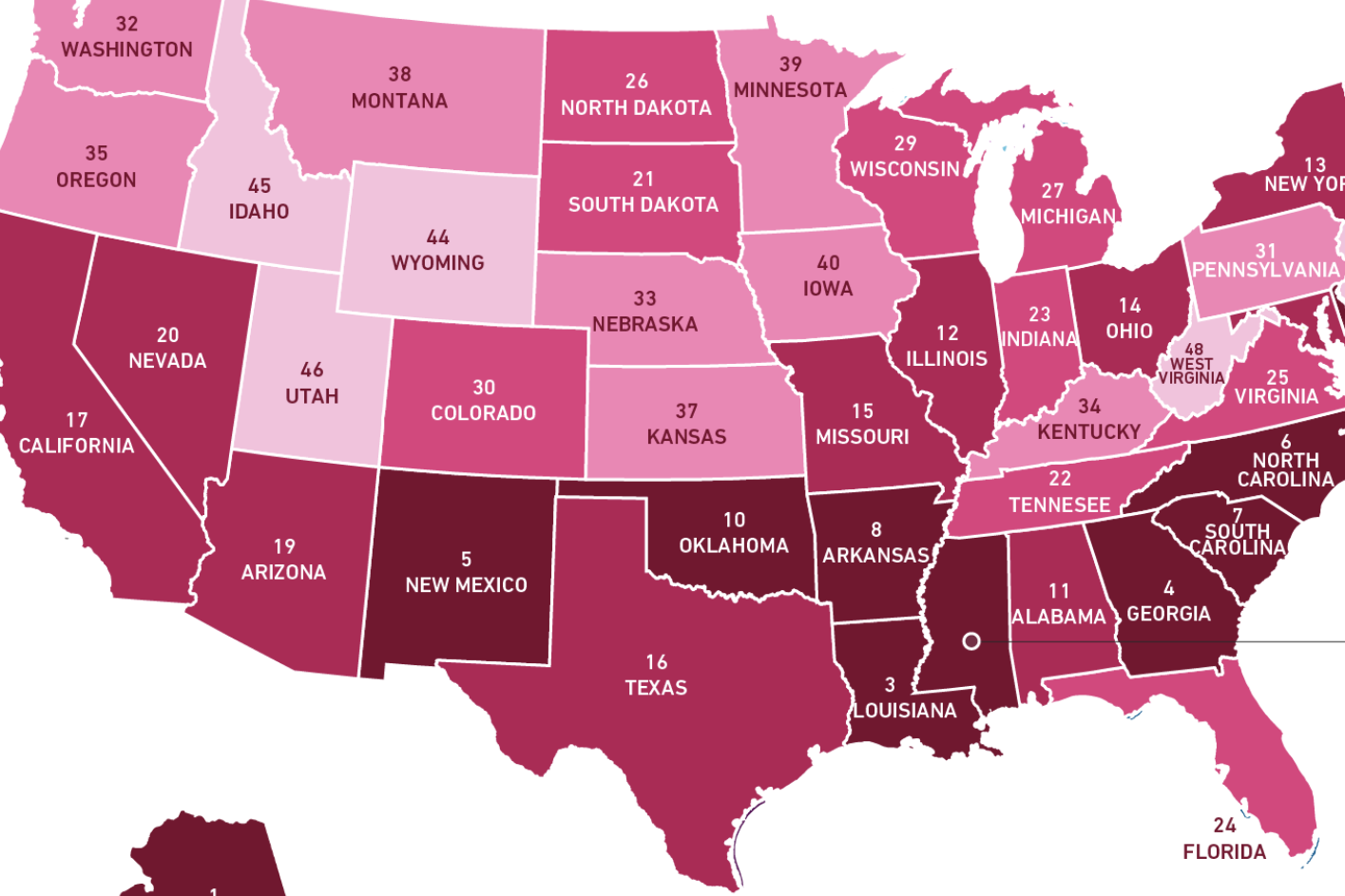STI map of America reveals most sexually diseased state
The most diseased state may surprise you

Forget the dense city-dotted coasts teeming with young free and single people, the US state with highest rate of sexually transmitted infections is Alaska.
Newly released data from the Center for Disease Control shows that amid the rise in hook-up culture and dating apps, sexually transmitted infection (STI) rates are surging like never before.
STI figures reached their highest levels in 2016, the most recent year for which data is available. Website BackgroundChecks.org crunched the data to combine the rate of incidents per 100,000 residents for the two most common STIs – gonorrhoea and chlamydia.
The top 10 worst states are, in order, Alaska, Mississippi, Louisiana, Georgia, New Mexico, North Carolina, South Carolina, Arkansas, Delaware, and Oklahoma.
They, along with a bunch of other states, reported a significant increase in gonorrhoea rates in 2016.
But it’s Maryland that’s seen the most significant increase in diagnoses of gonorrhoea and chlamydia in the last year, moving it up from 24th place to 18th.
The safest state? Vermont, closely followed by New Hampshire, West Virginia, Maine and Utah. Hawaii saw the most significant drop in sexually-transmitted infections last year, falling eight spots from 20th to 28th.
Chlamydia diagnoses went up nearly five per cent since 2015, while gonorrhoea cases went up 18.5 per cent in a year - as people continued to become resistant to treatment.
The rate of primary and secondary syphilis infections went up 17.6 percent since 2015.
The biggest increase was seen in cases of congenital syphilis, which went up by more than 25 per cent.
Dr Jonathan Mermin, director of the CDC’s National Center for HIV and AIDS, said: “Increases in STDs are a clear warning of a growing threat. STDs are a persistent enemy, growing in number, and outpacing our ability to respond.”
There are around 20 million new STD infections each year and the cost to the US healthcare system is around $16bn.
Dr Gail Bolan, head of STI prevention at the CDC, said surveillance systems should be improved to improve detection.
Continued studies of STIs should also focus on the risk of infertility and a greater vulnerability for HIV, among other health effects. She said: “It is my hope that a decade from now, we will be reporting on progress, instead of more health inequity in our society.”
Subscribe to Independent Premium to bookmark this article
Want to bookmark your favourite articles and stories to read or reference later? Start your Independent Premium subscription today.

Join our commenting forum
Join thought-provoking conversations, follow other Independent readers and see their replies